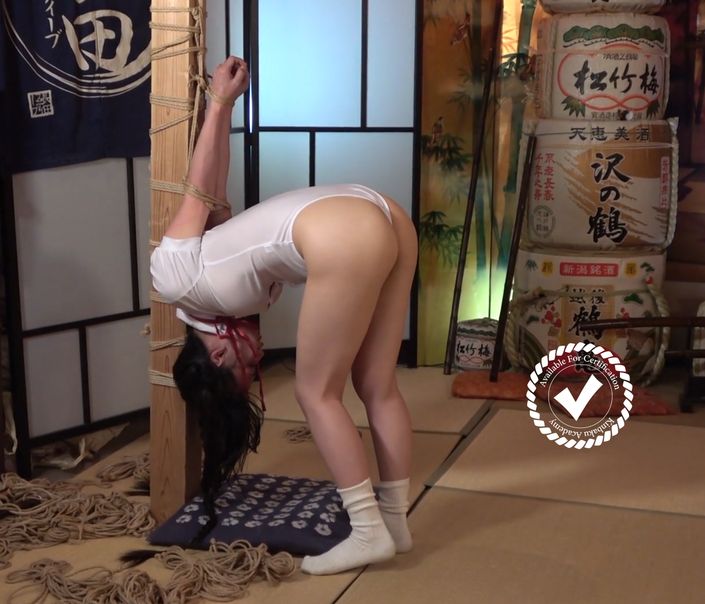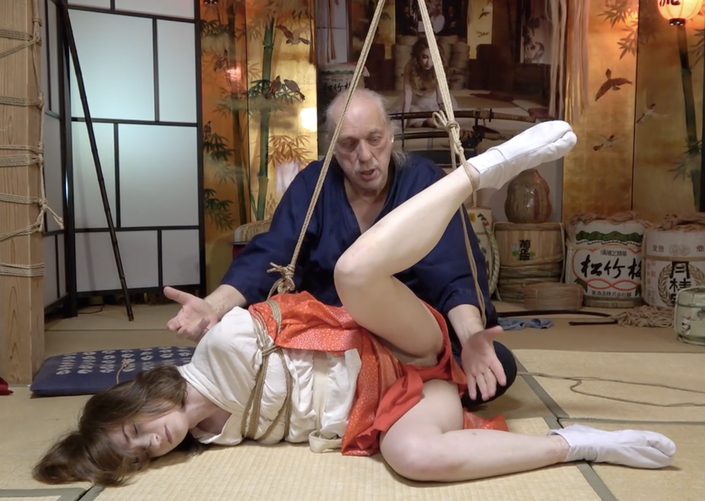
Double Suspension Challenge
In this workshop, we crank up the skill level a few notches with a masterclass of two suspension techniques: cross-legged (agura, 胡座) and Ebi (shrimp, 海老).
Both tsurikata (suspension techniques, 吊り方) allow for various methods of tying the upper body (johanshin, 上半身).
To avoid the house-mover syndrome we employ a pulley system (kassha, 滑車). In case you didn't know, the legendary kinbaku grandmaster Akechi Denki (明智伝鬼) has been using a pulley in ALL his suspensions.
The usual caveat applies that exceptions prove the rule.
Agura (胡座)
Agura (胡座) is a seating position where the legs are crossed. Depending on a person's flexibility this can take any form from a simple crossing of the ankles to sitting in the lotus pose.
In what we call an agurazuri (胡座吊り) the main load is on the lower body that can be combined with various types of upper-body ties that will determine the balance when airborne.
Ebi (海老)
In what we call an ebizuri (海老吊り) the body balance is mainly a function of where exactly the upline is attached to the stem between ankles, waist, and upper body. A traditional (hojojutsu, 捕縄術) ebi is based on a takatekote/gote (高手小手/後手), but in this workshop, a front TK (maete, 前手) is being used -- in which case be sure to have enough rope to fix the kote (小手) part to the waist.
The leg-based agurazuri offers several progression opportunities i.e. the ejector seat (see photo on top), face down (by attaching a new suspension line to the ankle ropes and then releasing the main suspension line) etc. I'm sure someone will eventually come up with a way to transition into a side suspension and all sorts of other new and exciting tsurikata (suspension techniques, 吊り方).
Front-TK-based Ebizuri

Agurazuri
.

Ropemarks Inspection
.

Ebizuri
.
The Curriculum
150 minutes
First Section
Available in
days
days
after you enroll



